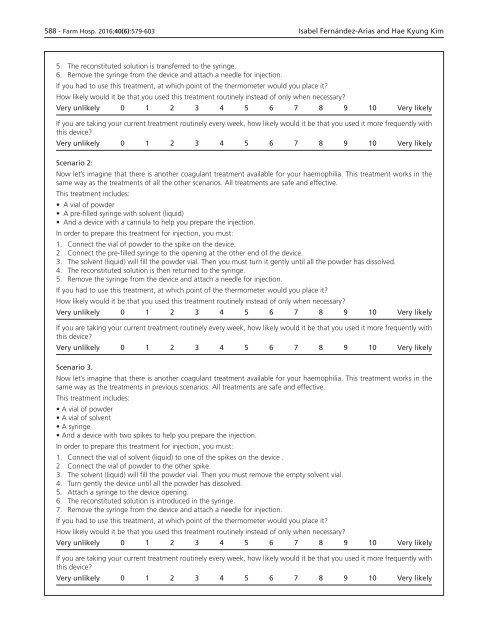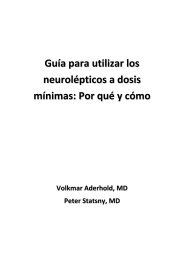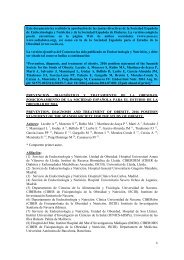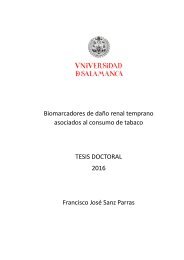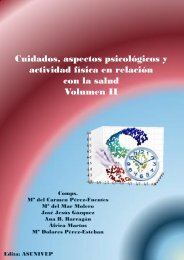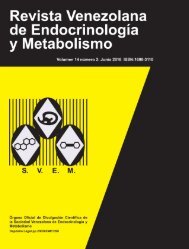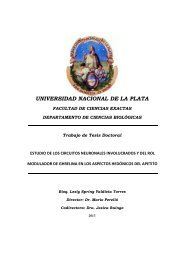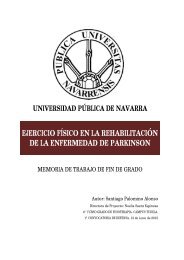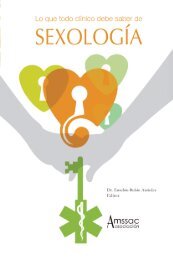Noviembre-Diciembre
156_v40n6(1)
156_v40n6(1)
You also want an ePaper? Increase the reach of your titles
YUMPU automatically turns print PDFs into web optimized ePapers that Google loves.
588 - Farm Hosp. 2016;40(6):579-603 Isabel Fernández-Arias and Hae Kyung Kim<br />
5. The reconstituted solution is transferred to the syringe.<br />
6. Remove the syringe from the device and attach a needle for injection.<br />
If you had to use this treatment, at which point of the thermometer would you place it?<br />
How likely would it be that you used this treatment routinely instead of only when necessary?<br />
Very unlikely 0 1 2 3 4 5 6 7 8 9 10 Very likely<br />
If you are taking your current treatment routinely every week, how likely would it be that you used it more frequently with<br />
this device?<br />
Very unlikely 0 1 2 3 4 5 6 7 8 9 10 Very likely<br />
Scenario 2:<br />
Now let’s imagine that there is another coagulant treatment available for your haemophilia. This treatment works in the<br />
same way as the treatments of all the other scenarios. All treatments are safe and effective.<br />
This treatment includes:<br />
• A vial of powder<br />
• A pre-filled syringe with solvent (liquid)<br />
• And a device with a cannula to help you prepare the injection.<br />
In order to prepare this treatment for injection, you must:<br />
1. Connect the vial of powder to the spike on the device.<br />
2. Connect the pre-filled syringe to the opening at the other end of the device.<br />
3. The solvent (liquid) will fill the powder vial. Then you must turn it gently until all the powder has dissolved.<br />
4. The reconstituted solution is then returned to the syringe.<br />
5. Remove the syringe from the device and attach a needle for injection.<br />
If you had to use this treatment, at which point of the thermometer would you place it?<br />
How likely would it be that you used this treatment routinely instead of only when necessary?<br />
Very unlikely 0 1 2 3 4 5 6 7 8 9 10 Very likely<br />
If you are taking your current treatment routinely every week, how likely would it be that you used it more frequently with<br />
this device?<br />
Very unlikely 0 1 2 3 4 5 6 7 8 9 10 Very likely<br />
Scenario 3.<br />
Now let’s imagine that there is another coagulant treatment available for your haemophilia. This treatment works in the<br />
same way as the treatments in previous scenarios. All treatments are safe and effective.<br />
This treatment includes:<br />
• A vial of powder<br />
• A vial of solvent<br />
• A syringe<br />
• And a device with two spikes to help you prepare the injection.<br />
In order to prepare this treatment for injection, you must:<br />
1. Connect the vial of solvent (liquid) to one of the spikes on the device .<br />
2. Connect the vial of powder to the other spike.<br />
3. The solvent (liquid) will fill the powder vial. Then you must remove the empty solvent vial.<br />
4. Turn gently the device until all the powder has dissolved.<br />
5. Attach a syringe to the device opening.<br />
6. The reconstituted solution is introduced in the syringe.<br />
7. Remove the syringe from the device and attach a needle for injection.<br />
If you had to use this treatment, at which point of the thermometer would you place it?<br />
How likely would it be that you used this treatment routinely instead of only when necessary?<br />
Very unlikely 0 1 2 3 4 5 6 7 8 9 10 Very likely<br />
If you are taking your current treatment routinely every week, how likely would it be that you used it more frequently with<br />
this device?<br />
Very unlikely 0 1 2 3 4 5 6 7 8 9 10 Very likely


